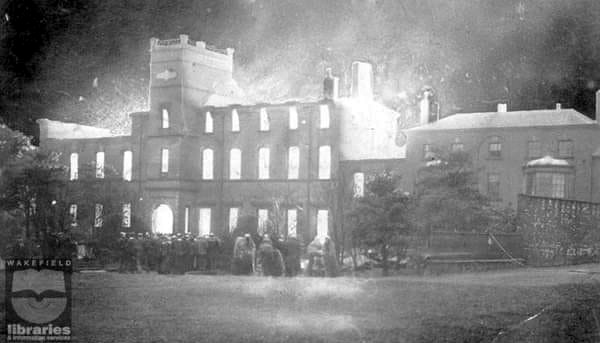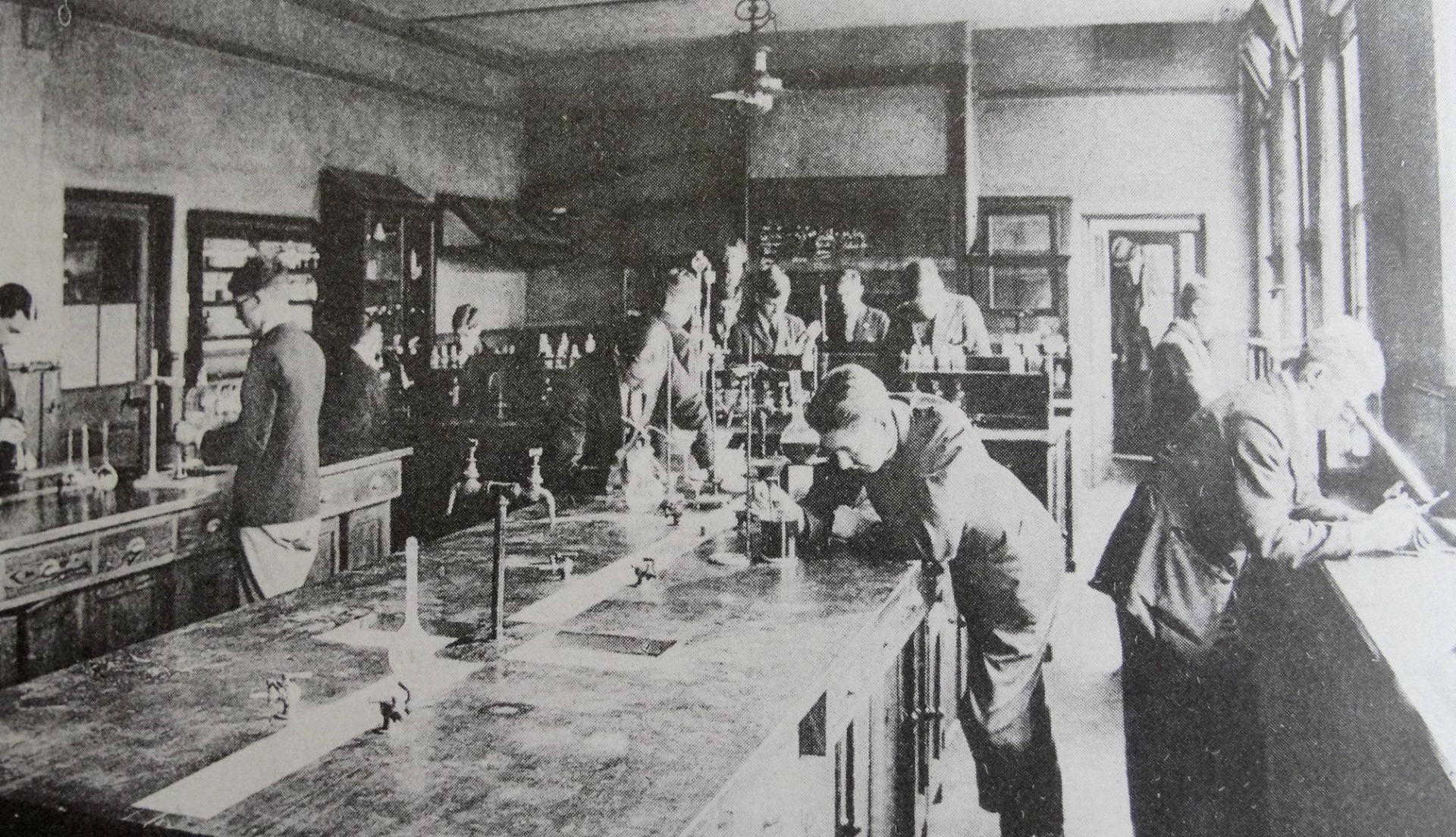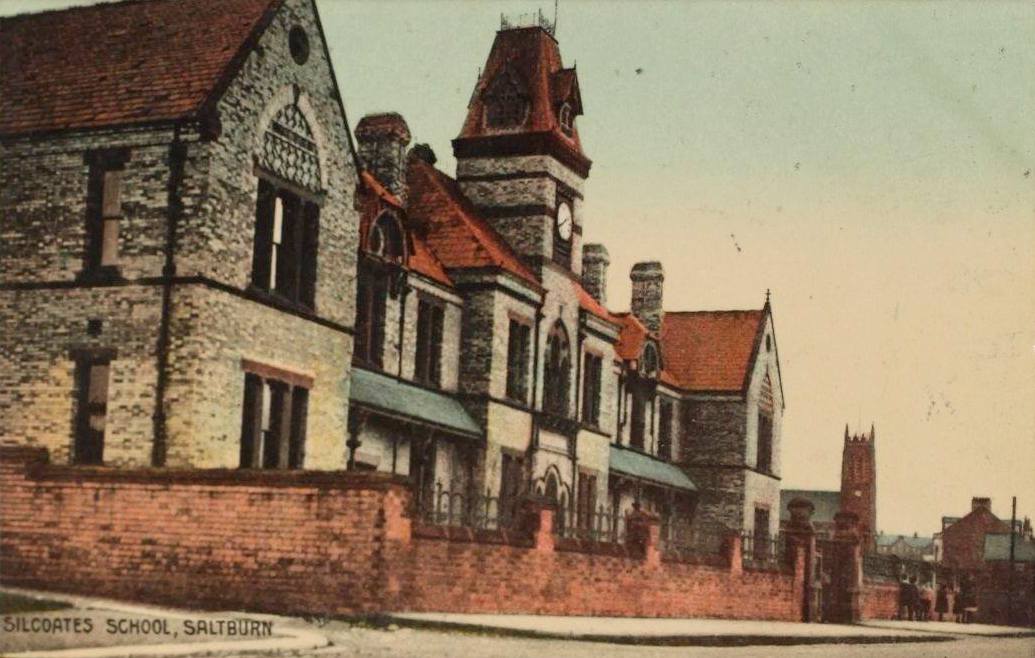
Silcoates School
Silcoates School is a co-educational independent school in the village of Wrenthorpe near Wakefield, England.
The school was founded in 1820 as the Northern Congregational School at Silcoates Hall, for the board and education of the sons of Nonconformist clergy, and was situated close to Ossett and Horbury, each of which had unusually large Nonconformist populations.
It was a boys' boarding school until 1995, receiving pupils from around the world. Girls were admitted into the sixth form from 1976, with female boarders accommodated in the Coach House.
The school now exists as a co-educational day school with a campus on the border between the villages of Wrenthorpe and Alverthorpe.
Silcoates School is made up of three separate, but closely linked, sections: a Senior School for boys and girls aged 11 to 18; a Junior School for boys and girls aged 4 to 11; and Pre-School for boys and girls aged 3 to 4.
School activities include drama and art, and music with a music school. Sport facilities include an indoor pool and sports pitches. The Duke of Edinburgh's Award programme makes use of various venues in the north of England and abroad.
The school motto is "Clarior ex Ignibus" or 'a light forged in fire', commemorating a 1904 fire that caused the school to move into temporary exile in Saltburn, on the North Yorkshire coast between Whitby and Middlesbrough.
Origins & History
The house was built in 1748 as the residence of John Lumb (1690-1764), a wealthy wool merchant who was the brother-in-law of Richard Foster of Flanshaw Lane (1686-1729), and was originally known as Silcoates Hall.
Years later, the building passed from the Lumb family to the Kendal family.
In 1820 it was leased by dissidents who formed The Yorkshire Dissenters' Grammar School, which in 1831 became the Congregational School for York and Lancaster counties.
Additional construction took place in the 1870s, and the 5-bay, 3-story range may be a survivor from this period, although much of the school was destroyed in a fire on April 13, 1904.
When the great fire occurred, Wrenthorpe was outside the Wakefield boundaries and someone had to bike from Silcoates School to the Wood Street Police Station to contact the Dewsbury Fire Department. It was more than an hour before the fire truck reached the scene.
Reconstruction & Restoration
The Silcoates' motto is a reminder of the rebirth of the present school after its predecessor had been destroyed by fire in 1904 and to the indomitable spirit of the founders in rebuilding from the ashes.
The first school was founded in 1820 by a handful of Congregationalists who, with the example before them of a Lewisham school for non-conformists, decided there was a place for a similar school in the north.
Silcoates Hall was bought from the Lumb family and The Yorkshire Dissenters' Grammar School opened it's doors.
The next few years, however, saw only struggle and frustration: although in theory the Congregationalists wanted their school, they were slow to support it and, in the short space of ten years, it was forced to close. It's successor, a grammar school and commercial academy, also failed through lack of support. Though some of the promoters had suffered heavy monetary losses, they nevertheless were determined to try again.
A third venture was promoted, this time for the sons of non-conformist ministers in the York and Lancaster dioceses. By the end of the first year, there were only twenty-two pupils, though the numbers rose to thirty six when the sons of ministers and missionaries were admitted from other counties.
At Silcoates Hall, now leased to the School, the Headmaster and one assistant taught the boys in a schoolroom above the coachman's house, an old building which is still in existence. Only when the sons of laymen were also permitted to attend, in 1842, did Silcoates begin to pay it's way.
Despite a few uncertain years, with the appointment of Dr Bewglass as Headmaster, the School began to develop, though financially its future continued to be precarious. More trouble lay in store. The lease of Silcoates Hall was almost at an end and the owner decided to sell.
The Governors were faced with three possible decisions: to close the School, acquire another site or buy the estate. After much deliberation, they decided to buy: a bold step, for the price was £ 15,000. However, with little difficulty, the purchase money was raised and, in 1871, a new and enlarged Silcoates was opened with fifty pupils. It seemed as if, at last, prosperity was within sight.
But troubles had not been left behind and the greatest disaster of all came in 1904. Silcoates School was almost wholly destroyed by fire during the Easter holidays. Yet, out of tragedy, was produced the nucleus of today's splendid school. The Committee, the Trustees and, most of all, the Headmaster, John Arthur Yonge (1865-1946), refused to give up. In spite of everything, Silcoates went on, at first in a small hotel in Harrogate and afterwards in a house in Saltburn.
No school, however, could flourish for long in temporary quarters. To rebuild would cost at least £ 10,000 if, as was envisaged, Silcoates was to remain independent. Three foundation stones were laid on 2nd November 1907; one for Yorkshire, one for Lancashire and one on behalf of the Trustees.
In October 1908, Silcoates School began life once more, this time with dormitory accommodation for a hundred boys. It was a brand new school except for the original Silcoates Hall which, the only part to survive the fire, became the Headmaster's house. The new school had laboratories and music rooms, a gymnasium, assembly hall and large covered playground, besides the usual form rooms, dining room and kitchen. However, a school is about more than just buildings. Sydney H. Moore (1878-1964)
became Headmaster in 1918. His twenty-five years of outstanding leadership added immeasurably to the academic and spiritual progress of the school.
Headmaster Mr Frank Spencer, who succeeded Mr Moore in 1943, devoted the seventeen years of his headmastership to developing the School and winning recognition for it's status. A milestone in it's history was reached when, in 1957, Mr Spencer was elected to the Headmasters' Conference. By the time he retired in 1960, the number of boys had doubled, whilst friends, Old Boys and parents had banded together with a will to raise money for a new wing with five additional form rooms, a specialist geography room and library for the seniors.
There were new tennis courts and a new cricket field where Wilfred Rhodes (1877-1973), then seventy-one years old, bowled the first over to Brian Sellers (1907-1981). In Wrenthorpe a nearby house was bought to accommodate another twenty boarders and, in 1958, a substantial grant from the Industrial Fund helped to modernise existing science laboratories and build new ones. Mr Spencer and his wife worked unceasingly to keep alive, even with the increased numbers, the intimate family atmosphere which had been born so long ago in the years of exile at Saltburn.
Raymond Evans, an Old Silcoatian himself, followed Mr Spencer as Headmaster, and he and his wife also succeeded in preserving that family spirit. Helping to foster that family atmosphere, the Silcoates fag system operated in reverse of the usual order: seniors looked after the smaller boys, waiting on them at meal times and helping them, like older brothers.
Dr Evans was, in turn, succeeded by John Baggaley in 1978, who did much to stabilise Silcoates during his tenure, metaphorically and literally, as several of the buildings were suffering from subsidence due to the legacy of coal mining. He also initiated the development of the Science and Technology building, which extended the classroom facilities of the School considerably. It's a testament to the robustness of Mr Baggeley's designs that, even today, it's referred to as the 'New Building'!
Following his retirement, Paul Spillane became Headmaster. At the very early stage of his headship, the controversial but necessary decision was made to end boarding after 170 years. At the same time, the decision was also made to become fully co-educational. As well as presiding over a considerable growth in the number of pupils, Mr Spillane oversaw the construction of the Music School, providing a facility which has done so much to nurture generations of musicians at the School.
When Mr Spillane retired in 2008, the School gave a warm welcome to Darryl Wideman. Silcoates was not immune to the downturn in the region's economy following the recession of 2008-09 and some difficult decisions had to be made to remodel the School to place it on a firmer financial footing. As part of that restructuring, the decision was made to relocate the pre-school facilities so that now all pupils at the School are educated on one site. Several other major projects were undertaken, not least the Multi-Use Games Area (MUGA) and dedicated astroturf pitch, complete with floodlights, which were opened in 2013.
Philip Rowe arrived at the school in September 2017 and set about converting the headteacher's house into offices and meeting rooms, giving the school a new reception area for visitors. The current director is Mr Wainman, who replaced Mr Rowe in September 2021.
Return to Normality
After the great fire at Silcoates School in 1904, the establishment authorities had to find out how the school's education was continuing, so it was decided temporarily to move to Saltburn.
Saltburn House, was opened in 1872 at a cost of £ 12,000 by Messrs. Pease as a convalescent home for their workers, and the house became a temporary base for Silcoates School pupils after the great fire.
The rebuilt school, still open, offers assisted help to students with what is known as the "Saltburn Scholarship" in memory of the bond with the city. Later, the house was sold to the Working Men's Clubs and Institutes Union ("CIU"), making it a convalescent home for club members, one of several across the country. It's residents used to come, from all the major working-class areas of the UK, for subsidized two-week breaks.
Later acquired by Hayes Working Men's Club, it was renamed "Saltburn House" in 2014.
It should be noted that William Thomas Stead (1849-1912), the great journalist of the Victorian era, attended Silcoates School in Wakefield between 1862 and 1864 and wrote his time there. During the 1904 fire, Stead was still alive and may well have written about the students' move from Silcoates School to Saltburn. However, years later, William Thomas Stead would die aboard the Titanic, on April 15, 1912.
Structural Characteristics of Silcoates School
The Silcoates School building is brick with ashlar slats and cobblestones at the main openings, and a Welsh slate roof.
The main house is symmetrical and consists of a 3-storey range of 3 bays with 2- storey, 2-bay side wings.
The centre bay is set in a recessed giant round- arched panel, and central round-arched doorway with Tuscan engaged colonettes rising from ground-floor sill band supporting a frieze and triangular dentilled pediment.
Two-storey canted bays to each side with colonnettes dividing the 3-lights and ogee domed roofs, and 12-pane sashes. Five 6-pane sashes to 2nd floor. Moulded brackets to gutter. Lateral stacks. Hipped roof. 12-pane sashes to side wings.
The school extends to the left with a 2-storey range, with 7-bays of ground-floor casements and 1st-floor sashes and casements. Between bays 5 and 6 is a giantpedimented projecting wing with a giant Venetian window flanked by paired Ionic pilasters.
Foundation tablets at base, oculus in tympanum. Further to the left is another 3-storey range, possibly 1870s, almost identical to the main house but with a further 2 bays at the left side. Further range to the left and left return, in- keeping, but of lesser interest.
Further building took place in the 1870s and the 5- bay 3-storey range may be a survival of this period.
The rear of the house has a central projecting wing with a round-arched stair window. More later additions. Inside, the house still has the original stairs and the ceilings are molded.
Legacy
Silcoates School celebrated it's bicentenary in 2020, during an unprecedented year. Despite that long ago fire, the School still stands on the outskirts of the villages of Alverthorpe and Wrenthorpe, high above the surrounding country and in the midst of 52 acres of lawns and playing fields.
As an independent co-educational day school, educating children from 3 to 18, it remains a community which expounds high academic standards, coupled with an appreciation that the development of the all-round character of each child is just as important.

John Lumb / Wool Merchant
John Lumb (Wakefield, West Yorkshire, England, UK; 1690 - Wakefield, West Yorkshire, England, UK; August 11, 1768) was a wealthy wool merchant who built Silcoates School in the mid-18th century.
Family
The founder of the Lumb dynasty in Wakefield was John Lumb, son of Ann Lumb (c. 1660 - 2 August 1735) and John Lumb (1638-1719), originally from Kirkhamgate, who married around 1688 and had 2 children: John Lumb (1690-1768) and Mary Lumb (1695-1757).
The Lumbs were wealthy and prominent citizens of Wakefield, and the oldest branch lived in Silcoates Hall, built in 1748 for John Lumb on an estate near Alverthorpe Church from bricks made on the Pemberton Milnes estate on Ossett Road. Later, it became the residence of the principal of the Silcoates School, outside of Wakefield.
John's sister, Mary Lumb (1695-1757), married Richard Foster of Flanshaw Lane (1686-1729), who reserved his pressing shop for the construction of the first chapel at Ossett in the early 18th century.
John Lumb married Sarah Milnes (1698-1741) in Wakefield, York, England on October 11, 1715, and together they had 5 children: John Lumb (1720-1803), Barbara Lumb (1722-?), Richard Lumb (1726-1807), Sarah Lumb (1716-?) and Hannah Lumb (1718-?).
One of the sons, also named John Lumb (1720-1803), inherited Silcoates Hall when his father died in 1768 and married Anne Milnes (1724-1764), cousin of the internationally known poet Esther Milnes Day (1753-1792).
Richard Lumb, of Wakefield and Ackton Hall, was one of the sons, and his wife Sarah Taylor had died in 1763, but he was survived by two sons and five daughters. The second boy, Samuel, John Lumb's grandson, was described as a wool stapler on April 7, 1783, when he converted to Freemasonry in Wakefield at the age of twenty-one.
He was independently wealthy as the heir to his uncle Robert Lumb (1715-1789), who died in the summer of 1789 leaving property in trust for his sisters and nephew Samuel.
It should be noted that Sarah Milnes was the daughter of Hannah Poole (1673-?), who was in turn the daughter of Joseph Poole (1656-1706), captain of the parliamentary army, and of Robert Milnes (1671-1737), a successful merchant of Wakefield.
One of John Lumb's nephews (1690-1764), John Foster de Wakefield (1723-?), emigrated to Funchal taking advantage of the historic alliance between the British and the Portuguese.
Anne Milnes Lumb has left a beautiful account of her life at Silcoates Hall in a journal, called the Diaries of Mrs. Anne Lumb of Silcoates, near Wakefield, in 1755 and 1757, which was published in London by Westgate Chapel in 1884.
Death
John Lumb died on August 11, 1768 at the age of 78 in Wakefield, England and lies in the catacombs below Westgate Chapel along with his children.
Bibliography
- Pevsner, N, Radcliffe, E, The Buildings of England: Yorkshire: The West Riding, (1967)
- Taylor, K, Wakefield District Heritage, (1975)
This website is developed by Westcom, Ltd., and updated by Ezequiel Foster © 2019-2024.










